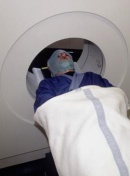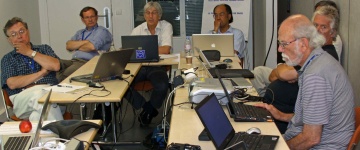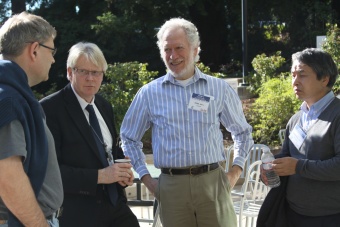First of all a Happy New Year to all readers!
We have now come over the middle point of the Letters-of-Intent (LOIs) process to produce a detailed baseline design (DBD) of the ILC detectors. The first half was very productive. Starting from the call for LOIs and establishing the advisory scheme, the International Detector Advisory Group (IDAG), we came through the validation, which included both hard work for preparation by many people and elaborated examination by IDAG. Much work on detector R&D and physics simulation is now being continued to be integrated into two detector systems by the two validated groups. While further efforts are needed towards the completion of DBD, it is timely to make an interim report now, and we are already working on it.
Image of the week
SLAC’s new associate lab directorSLAC’s new Director of the Accelerator Directorate Norbert Holtkamp (2nd from left) meets with GDE Project Managers Nick Walker, Marc Ross and Akira Yamamoto on a sunny afternoon in Palo Alto, California. Holtkamp welcomed GDE members to SLAC at their second Baseline Assessment Workshop on Tuesday. |
In the News
- From physicstoday.org 18 January 2011 Does the world need the US to lead particle physics? … As if to acknowledge the new reality, one possible next-generation machine, the International Linear Collider, even has “international” in its name.
- From Cern Bulletin 17 January 2011 The end of a remarkable era An important era in particle physics is coming to an end: the US Department of Energy announced on Monday that it will not fund an extension to Tevatron running beyond 2011.
- From New York Times 17 January 2011 Recalling a Fallen Star’s Legacy in High-Energy Particle Physics … Some day alien archaeologists could excavate the tunnel in which giant machines replayed the Big Bang and wonder what happened to the people who built it, and what they thought about their place in the universe.
- From Público 12 January 2011 La carrera por el mayor de los aceleradores Uno de los candidatos es el International Linear Collider (ILC), un acelerador que abandona la forma circular por una lineal que funciona a menos potencia que el LHC (un teraelectronvoltio) pero aprovecha mejor cada colisión. (in Spanish)
Copyright © 2025 ILC International Development Team




